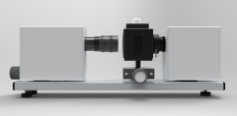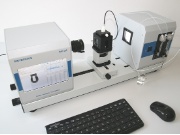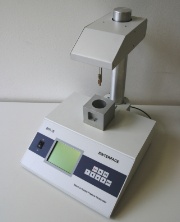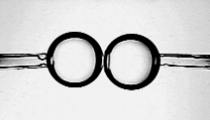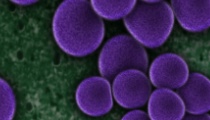Profile Analysis Tensiometer PAT1M
This tensiometry method goes back to the methodology called ADSA, which was developed by Neumann and his team after the modern video technique became available and computers were powerful enough for managing large computational work in a reasonable time. Now, this method of determining the surface and interfacial tension from the profile of pendent and sessile drops is the most frequently used technique and various commercial instruments are on the market. Our PAT1M is based on this methodology and due to its modular architecture, compact design and highly accurate and efficient software it is one of the best instruments of this type worldwide. The process of measurement consists of the image acquisition of the drop/bubble profile, its digitalization and final fitting by the Gauss-Laplace equation. A fully computer controlled dosing system allows to perform pre-programmed measurements with any type of protocol, including constant drop volume or constant drop surface area. Changes of the drop/bubble area according to a given protocol, as it is the case for relaxation experiments, is also possible, i.e. the response of the interfacial layer to harmonic or transient area perturbations can be recorded and hence the surface dilational visco-elasticity determined. The method has many advantages over others, most of all it can be applied to liquid/gas and liquid/liquid interfaces, requires small amounts of liquid, and the temperature control is possible in a rather broad range. Even high temperature experiments are feasible with a special temperature cell.
Profile Analysis Tensiometer PAT2S
The PAT2S is the latest version of PAT instruments and continues the great tradition of PAT1S. The most striking improvements in the newly designed PAT2S are the higher resolution of the video camera and the more flexible mechanical construction which allows to better adapt the instrument to the requirements of the user. In addition to the higher resolution also our HSC with high frame rates is embedded in the corresponding software. This instrument was presented for the first time at Analytica 2014 in Munich.
Maximum Bubble Pressure Tensiometer BPA2P
The idea of measuring the surface tension from the maximum pressure in a bubble is old, however, the possibility to do this in an accurate way and to receive experimental data over a broad adsorption time interval is rather new. Only by using accurately designed capillaries, accurate and reliable electric pressure sensors, and the proper scientific knowledge on the hydrodynamics of the liquid and aerodynamics of the gas, a correct measurement is possible. The measurement principle is just to determine accurately the pressure change in a bubble during its continuous growth at the tip of a capillary. The maximum of this pressure signal provides the surface tension values for the given liquid. The BPA2P is a mobile bubble pressure analyzer with a built in computer and storage so that this instrument can even be used off-line in field studies. It determined the hydrostatic component of the measured total pressure automatically so that surface tensions can be easily obtained. The available time range is between 10 ms and about 10 s, with an excellent accuracy and reproducibility.
Maximum Bubble Pressure Tensiometer BPA1S
The BPA1S is the high-end version of our BPA instruments and can provide dynamic surface tensions over a very broad time interval. Based on a particular protocol, proposed by Fainerman in 1990, it is possible to accurately separate the deadtime from the lifetime of a bubble, which allows for dynamic surface tension data in a time interval from less than one millisecond up to about 100 s bubble surface age. This six orders of magnitude time range is possibly the broadest in tensiometry for a single instrument. PAT covers only five orders of magnitude in time when running a measurement over more than a day, while both complement each other to provide a time window from t < 1 ms up to 24 h and more. The possibility of measuring at very short adsorption times allows even studies relevant for fast processes like ink jet printing or fast coating and gives insight into fast processes such as micelle formation/dissolution kinetics.
The development of the new high end bubble pressure tensiometer BPA2S provides again the shortest adsorption times available worldwide. To reach these ultra-short adsorption times of less than one millisecond, again the principle of Fainerman is applied, whichallows determining accurately the deadtime of bubble formation at highest bubble frequencies. The instrument is dedicated to users in science and development departments particularly interested in extremely short adsorption times, such as foaming or coating processes. The new hardware is based on very precise pressure and gas flow sensors and utilizes a new principle for bubble time detections.
Ring and Plate Tensiometer STA1
The ring and plate tensiometry belong to the classical methods for measuring the surface tension of liquids. Due to wetting problems, their use for liquid/liquid interfaces requires a lot of special care and PAT is superior and therefore highly recommended. The principle of this type of tensiometry is to determine the weight of a liquid meniscus formed at a solid body in contact with the liquid. Most frequently rings of a rather thin platinum wire or thin platinum or paper plates are used. A temperature control for the measurement is possible, however, the range is quite narrow due to the required access for the sensible weight measurement. Our STA is based on a standard electronic microbalance, which can then also be used for routine weight measurements.
Drop Pressure Analyzer DPA
This instrument is an equivalent to the BPA, however, modified such that it can be applied to drops in gas or immersed into a second liquid. This method is the only one that works for the interface between two liquid of the same density (or under microgravity conditions). The method allows measuring the dynamic surface or interfacial tension from about 10 ms up to minutes or hours. For long experimental times, however, a video control is required because the size of the drop should be kept constant during the experiment. Due to the viscosity and inertia effects of the studied liquids, data for adsorption times as short as 1 ms and less, accessible by BPA for the liquid/gas interface, cannot be obtained. The use of the DPA requires a drop profile analysis tensiometer PAT as its concept is to use parts of the PAT for its functionality. A stand alone version is under way so that a PAT as basis is not required.



